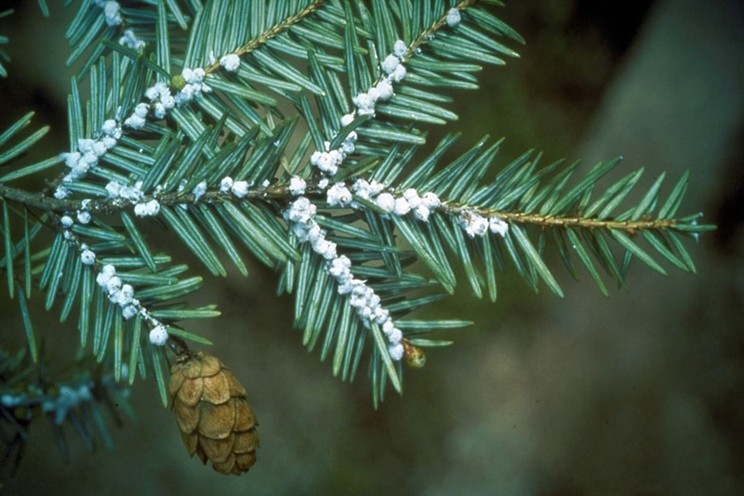First on the agenda was a presentation from Donna Crossland, who’s been working to prevent the spread of the hemlock woolly adelgid in Nova Scotia. This invasive species poisons hemlock trees, and has been spreading from southwestern Nova Scotia since its discovery there in 2017. It was first seen in the HRM in August, 2023. When these tiny insects infest a tree, they create distinctive white cotton-looking eggs that are the most recognizable symptom of the infestation. When old-growth hemlock trees are infected they die completely, forever, usually within three years.
The good news is that the HRM is on top of this threat and was directed by councillor Kathryn Morse to come up with a woolly adelgid plan in November of last year. And Crossland told councillors that early investment in things like pesticides and beetles can prevent increased reactionary spending down the road. Since Halifax is already coming up with a plan for this invasive species, the city should be well positioned to deal with the growing threat. This is, of course, on the assumption it gets funded when it comes up for consideration in a future council meeting.
The bad news is what threats like the wooly adelgid mean. Back in the year 2000, Nova Scotia’s forests used to sequester carbon and were a natural solution to some of our climate woes. But things like invasive species and clear-cutting are reducing the overall carbon sequestering capacity of Nova Scotia’s forests. This is part of the reason that since at least 2022 Nova Scotia’s forests have been adding carbon to the atmosphere. Trees are like carbon bank accounts, any carbon in trees stays in trees until those trees until the trees decompose. At that point they release all of the carbon they had sequestered in their lifetime. On top of that; turning trees into disposable consumer goods and replanting less effective forests combine to make sure that when we humans withdraw carbon from our forests we are we are massively overdrawing our account. Not to put too fine a point on it, but just to reiterate what the committee learned from Crossland: we are losing the fight to prevent climate change so badly that as of 2022, Nova Scotia’s forests now emit carbon instead of sequester it.
Also at this meeting, the city’s environment committee formally requested that the province adopt the “new” 2020 amendments to the federal building code. These changes will require new buildings to be constructed to a higher standard of energy efficiency and climate resilience. City staff told the committee that premier Tim Houston’s government promised to adopt the federal building code amendments in 2022, but hasn’t done it yet because of feedback from the construction industry who said they needed more time to ramp up capacity to meet the new safer, greener building standards.















